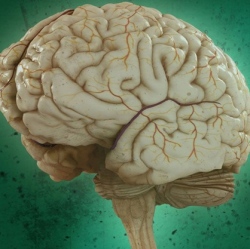
Less than 20 years after it was developed, a thin, resilient sheet of carbon atoms with remarkable properties known as graphene is transforming biomedical fields as far flung as tissue engineering, neuroprosthetics and drug discovery. Because it readily conducts heat and electricity, graphene also may be a good biosensor.
But it’s not neutral. When Vanderbilt University scientists tried to use graphene to measure electrical activity in the brain, they found that it actually enhanced nerve cell signaling.
It did so by enabling nerve cell membranes to pull in more cholesterol. The fatty substance was used to make more of the vesicles that package neurotransmitters, the chemical messengers that relay signals between nerve cells. More vesicles and more neurotransmitter meant stronger signals.
These findings, reported last week in the journal Nature Communications, came as a complete surprise to the investigators. They raise the possibility that graphene may enable researchers to change how cells communicate with each other by manipulating the cholesterol content in the cell membrane.
Graphene "not only may be a very good vehicle to deliver drugs but also a way to potentiate the drug effect," said the paper’s senior author, Qi Zhang, Ph.D., assistant professor of Pharmacology in the Vanderbilt University School of Medicine.
The researchers began their experiment by growing neurons—nerve cells—on a sheet of graphene.
The paper’s first author, Kristina Kitko, a graduate student in interdisciplinary material science, picks up the story from there in an invited column she wrote for a Nature Chemistry blog: "We observed an increase in neuronal firing frequency on graphene," she wrote. "This was substantial and our curiosity was piqued. When we began to look at more targeted measurements of presynaptic activity, what consistently emerged was surprising: synaptic potentiation on graphene."
Realizing that graphene was likely acting at the nerve cell membrane, which consists primarily of cholesterol, the next question was: "Might cholesterol somehow be involved?"
"This led us to the idea of manipulating membrane cholesterol levels," Kitko continued. "Cholesterol plays important and fundamental roles to cells in a variety of ways, but with particular relevance to drug discovery we demonstrated the effect of graphene on G protein-coupled receptors, whose activity are mediated by cholesterol."
